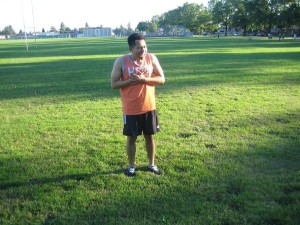Tendonitis is a condition that is characterized by inflammation of a tendon that results in soreness or pain such as overstretching of tendons with repetitive use. The wrist and the joints of the elbow are more susceptible to tendonitis since the hands and arms are used in various tasks. Minimize strain when treating tendonitis in any part of the body to allow faster healing and physical therapy in stabilizing joints and preventing future problems.
Symptoms
Wrist pain varies depending on what is causing it such as in osteoarthritis in which the pain is similar to a dull toothache. As for the pain in tendonitis, it is similar to a sharp, stabbing type of pain.

Causes
- One of the causes of wrist pain is sudden impact such as wrist injuries which occur when falling onto a stretched hand and this can lead to sprains, strains as well as fractures on the wrist.
- Repetitive stress such as activities that entails monotonous motion of the wrist such as striking a tennis ball which can inflame the tissues found around the joints or will cause stress fractures when performing a movement for hours without a break.
- Osteoarthritis occurs in people who have injury in the wrist in the past and is caused by the wearing and tearing on the cartilages that function in cushioning the ends of the bones and pain that happen at the base of the thumb can be caused by osteoarthritis.
- Rheumatoid arthritis can cause pain in the wrist which is a disorder in which the immune system of the body attacks its own tissues.
Treatment and home remedies
- Apply an ice compress on the affected area for fifteen minutes every two to three hours until pain caused by tendonitis is minimized.
- Wrap a compression bandage around the wrist or elbow in order to minimize swelling and flow of blood during the hours when the wrist is being applied with an ice compress. You can learn more about the effectiveness of an ice compress by enrolling in a first aid course.
- If pain and swelling persists, take an anti-inflammatory medication.
- Use an arm sling or a wrist brace in order to immobilize the affected joint until pain reduces and joint can be moved without causing pain or soreness.
- Rest the joints that are affected with tendonitis so that it can be used again for normal activities.
Physical therapy of the wrist
- Perform range of motion and increase flexibility by engage in stretching of the wrist and forearm by making slow circles using the wrist. Use the unaffected arm to bend the fingers on the injured arm back and press the fingers down toward the forearm but keep the injured arm at full extension during these stretches.
- Use wrist curls in order to stabilize and strengthen the forearm, elbow and the wrist. It can also be done by curling a jar or a dumbbell up and down using the strength of the wrist with the forearm. Position the back portion of the forearm and place it on a flat surface and let the hand sag off the edge of the surface to give the wrist the proper range of motion of curling up and down.
- Continue performing more strenuous activities slowly and cautiously.